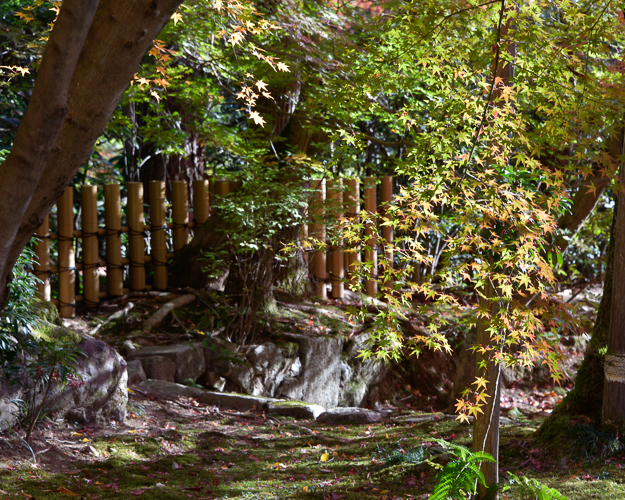November 30, 2023
I was in Kyoto with my late husband in 2009, and I have nothing but wonderful memories. I fell in love with Kyoto. I was not maintaining a website at the time, so my photos, as lovely as they are, sit in photo albums on a shelf. For this reason, I look forward to photographing Kyoto again and putting my experiences in an easily accessible space.
Kinkaku-ji

Kinkaku-ji is a Zen Buddhist temple. In 1397, the third Shogun of Ashikaga took over the area and built the Kitayama palace centered on the Kinkaku, or golden stupa.
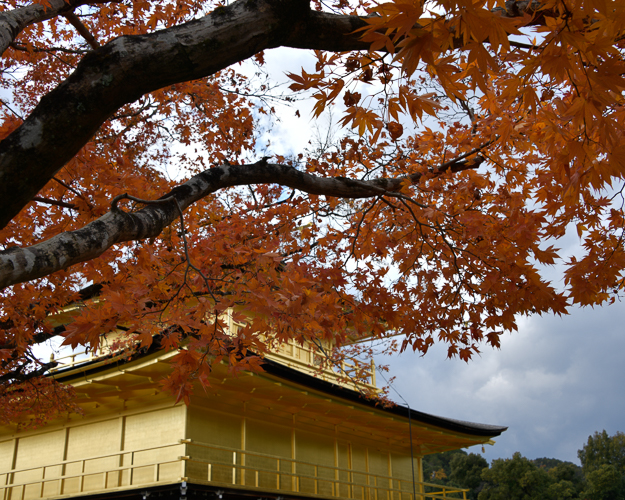
For reasons that are still unclear to this day, in 1950, a 22-year-old novice monk named Hayashi Yoken burned the pavilion down before attempting suicide. He survived and was sentenced to seven years in prison. He was released after being diagnosed with schizophrenia. The event was memorialized in the ballet RAkU and the book The Temple of the Golden Pavillion by author Yukio Mishima, who, himself is memorialized in the Inujima Museum.
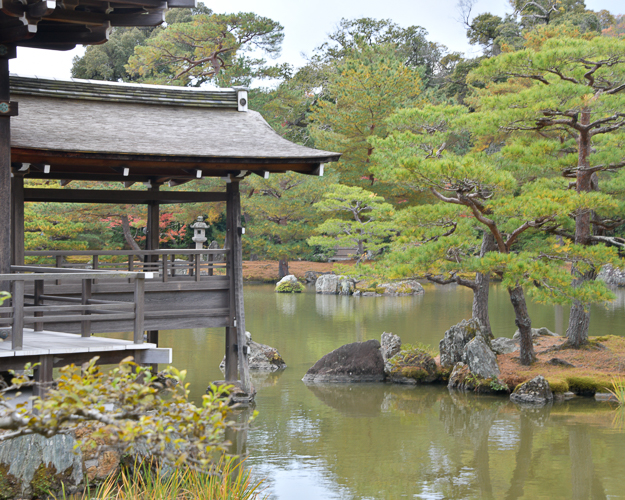
The fishing deck at the rear of the pavilion
The temple grounds are an excellent example of the Muromachi period garden design, considered to be one of the classical ages of Japanese garden design.
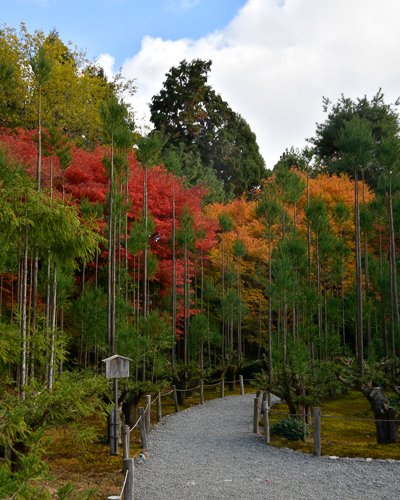
*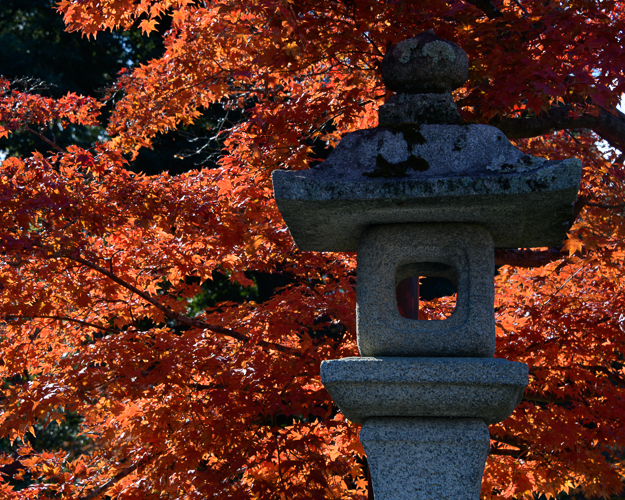
Ryonji Temple
Ryonji is most likely the most famous rock garden in the world. Originally an aristocrat’s villa during the Heian Period, the site was converted into a Zen temple in 1450.
The history of the garden is actually murky. The date of construction is unknown, and there are a number of speculations regarding its designer.
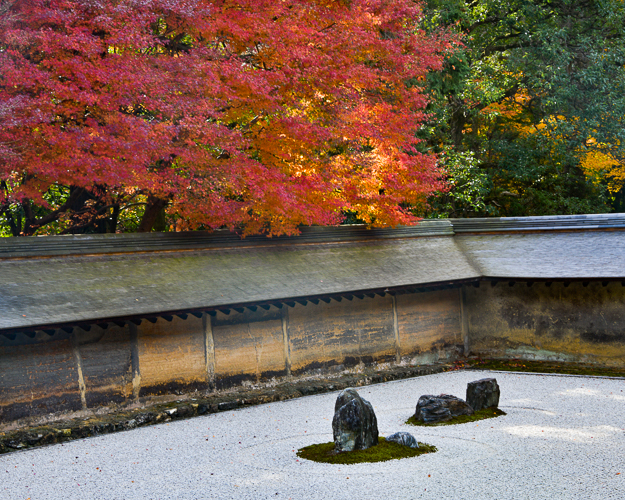
The garden consists of a rectangular plot of pebbles surrounded by low earthen walls, with 15 rocks laid out in small groups on patches of moss. An interesting feature of the garden’s design is that from any vantage point, at least one of the rocks is always hidden from the viewer.
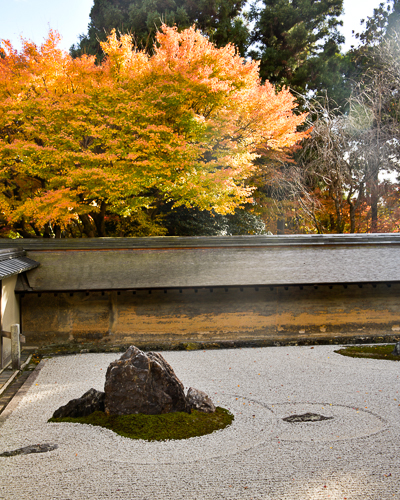
Here are some shots of walking the grounds of Ryoanji with the fall colors taking center stage.
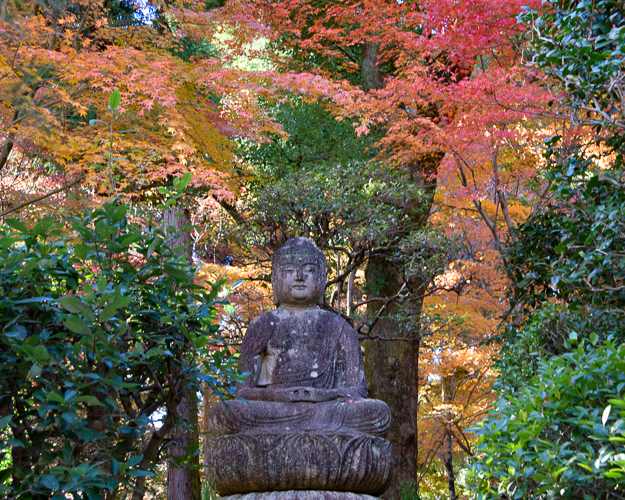
*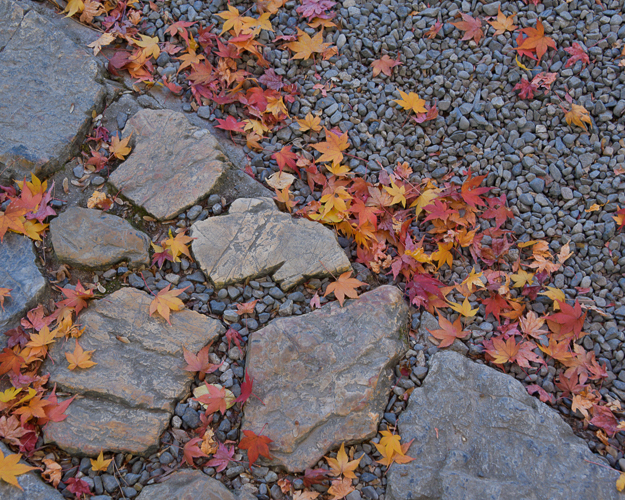 *
*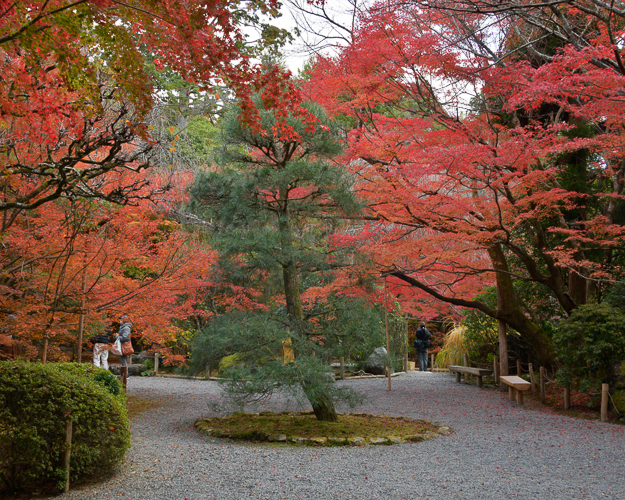 *
*